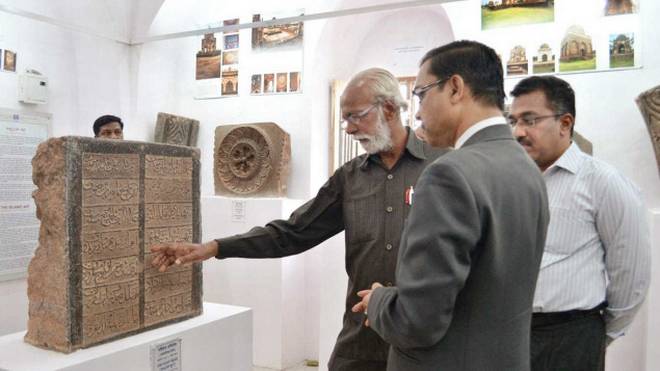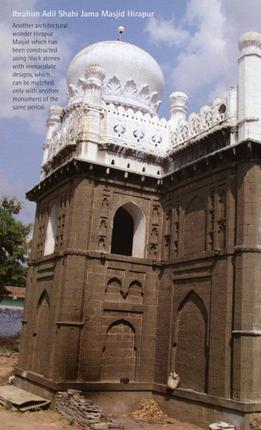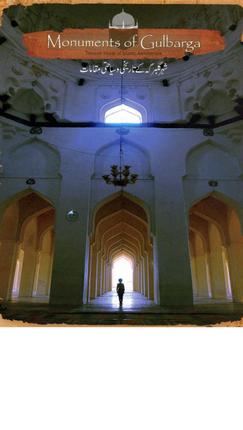Bidar, KARNATAKA :
An amazing collection of artefacts, inscriptions and photographs are on display at the refurbished tourist information centre and museum opened by the Archaeological Survey of India on the fort premises here on Wednesday.
The museum had been closed for two years for restoration.
The old museum housed in the Royal Bath room inside the Turkash Mahal complex has been moved to the Awwal Talukdar office near the front gate, opposite Rangeen Mahal.
It has tools used by hunters in Neolithic times that were found in 11 archaeological sites in Bidar district. Stone tablets dating from the 1st century; inscriptions that speak of the genealogy of Hassan Gangu Behman, the founder of the Bahmani dynasty; and a space saving tablet that has an inscription on one side and a design on the other, are among the exhibits.
The weapons section is full of guns of various shapes and sizes, cannon balls and thorns and grenades. Metal armour, swords, and khanjars are on display.
Of special interest are implements used by doctors in the 14th century, ornaments made from sea shells, terracotta tiles and painted wall hangings.
It also has artefacts found in neighbouring sites of Sannati, Maski, Kalaburagi, Vijayapura and Basavakalyan.
Archaeologist Prasanna Kumar took visitors and students around the museum and explained the significance of the artefacts. He spoke of sculptors used soap stone to carve female figurines to symbolise that beauty fade away over time, like the rock it was carved on. Abdul Samad Bharati read Persian and Arabic inscriptions to the delight of young visitors.
A.M.V Subrahmanya, Superintending Archaeologist, ASI, pointed out that some Madanika busts found in Basavakalyan and other sites in Bidar district were older than those found in Belur and Halebid.
A 30-minute audio guide about Bidar would be prepared to help tourists, he said. He also said work would start on an interpretation centre and sound and light show in Bidar fort.
The ASI is working with various government departments to draft a proposal to be sent to the UNESCO seeking heritage city status to Bidar- Kalaburagi and Vijayapura, he said.
Hanchate Sanjiv Kumar inaugurated the museum and asked youth to take pride in their history. Prakash Nikam, Superintendent of police, asked youth to desist from defacing monuments. “If we don’t etch on the walls at home, why should we do so on the walls of monuments that are national treasures?” he said
source: http://www.thehindu.com/ The Hindu / Home> News> States> Karnataka / by Rishikesh Bahadur Desai / Bidar – February 05th, 2016











